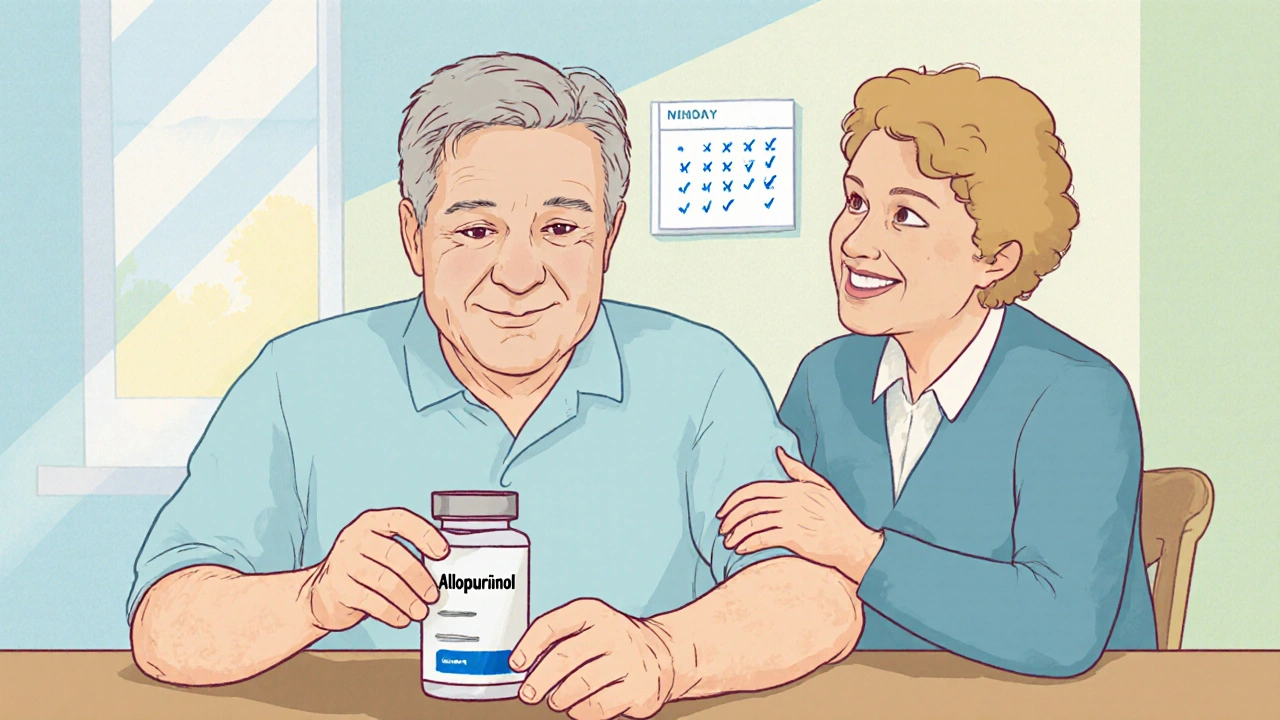Allopurinol – Comprehensive Guide
When working with Allopurinol, a xanthine oxidase inhibitor that reduces the production of uric acid. Also known as Aloprim, it is prescribed for conditions like gout, kidney stones, and some chemotherapy regimens. In plain terms, it tells the body to make less uric acid, so crystals don’t build up and cause pain.
The drug’s main job is to block xanthine oxidase, the enzyme that converts purines into uric acid. By cutting off that pathway, Allopurinol drops serum uric acid levels and stops new crystals from forming. This simple biochemical trick is why doctors reach for it whenever a patient’s uric acid is too high.
Related Conditions and Alternative Therapies
One of the most common reasons people hear about Allopurinol is gout, an acute joint inflammation triggered by uric acid crystals. The pain can be excruciating, and without proper treatment the attacks become more frequent. Another key term is hyperuricemia, a lab finding of elevated uric acid without obvious symptoms. Even if you aren’t hurting now, high levels forecast future gout attacks or kidney stone formation. For patients who can’t tolerate Allopurinol or need a backup, febuxostat, a newer non‑purine xanthine oxidase inhibitor offers a similar effect with a different safety profile. Knowing the alternatives helps doctors tailor therapy to each person’s kidney function, other meds, and lifestyle.
Speaking of kidneys, dose adjustments are a must when renal function drops. Allopurinol is cleared partly by the kidneys, so a reduced dose prevents accumulation and toxicity. Common side effects include rash, liver enzyme changes, and the dreaded severe skin reaction called Stevens‑Johnson syndrome. If you notice any unusual skin changes, seek medical help right away—early detection saves lives.
Drug interactions are another practical concern. Allopurinol pairs poorly with azathioprine, mercaptopurine, and some sulfonamides because it can raise their blood levels, leading to bone‑marrow suppression. It also amplifies the effect of warfarin, so INR monitoring becomes crucial. Understanding these relationships lets patients and providers avoid harmful combos.
Beyond the chemistry, lifestyle tweaks boost Allopurinol’s impact. Staying hydrated, limiting high‑purine foods (like red meat, organ meats, and certain seafood), and moderating alcohol can keep uric acid in check. Even modest weight loss often lowers serum levels, making the medication work faster. Our collection of articles below covers everything from how Allopurinol compares to newer agents, to step‑by‑step tapering guides, to safety tips for specific populations. Whether you’re a patient sorting out dosage questions or a clinician reviewing interaction tables, the posts give actionable info you can use right away.
Ready to dig deeper? Below you’ll find detailed comparisons, safety checklists, dosing calculators, and real‑world patient stories that illuminate how Allopurinol fits into everyday treatment plans. Explore the list and take the next step toward clearer, safer management of uric‑acid‑related conditions.
Why Support Systems Matter for Gout Patients on Allopurinol
- Laura Ledas
- Oct, 23 2025
Allopurinol controls gout, but patients thrive with strong support. Learn how family, doctors, and groups boost outcomes, avoid flares, and keep meds working.
Learn More